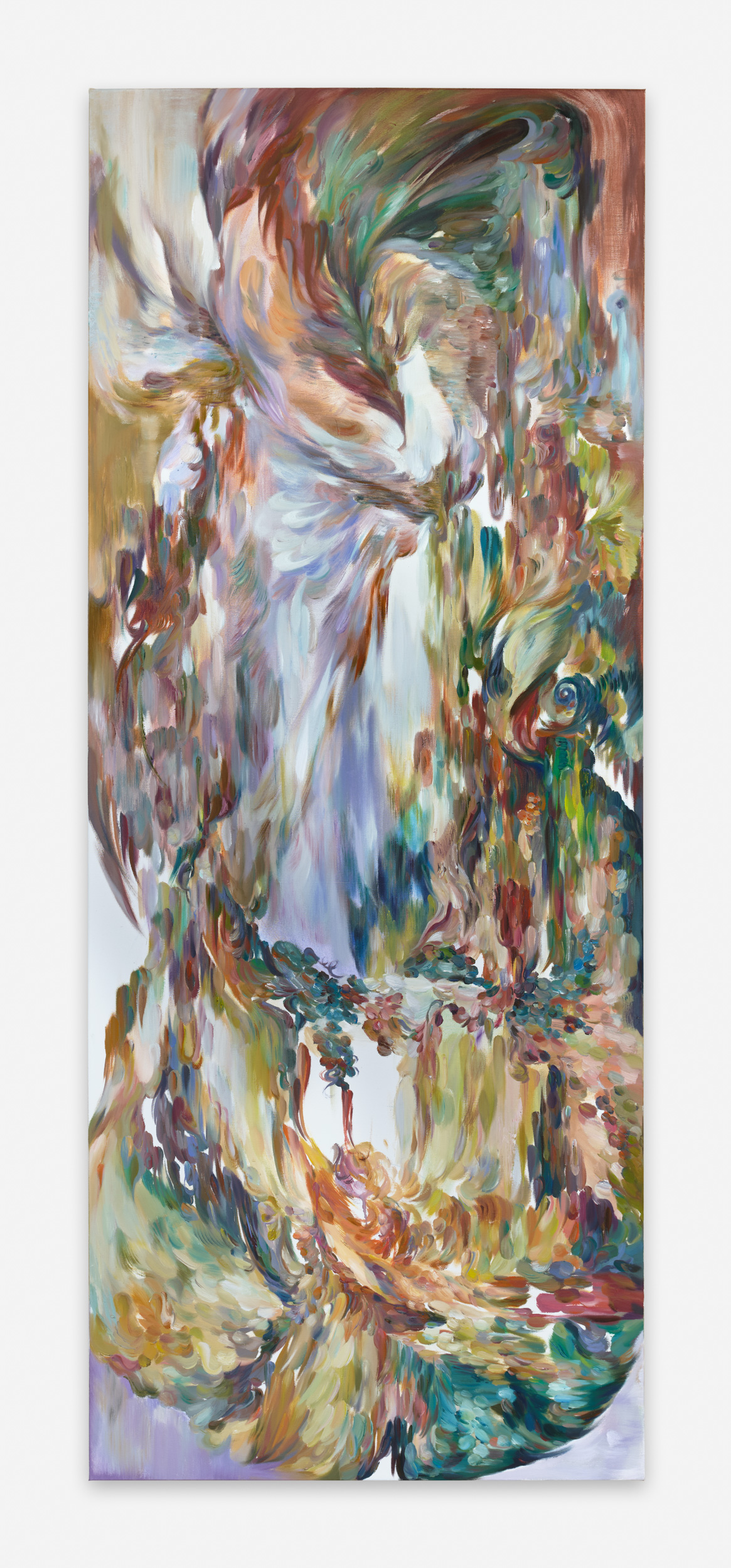Particles Maze
Lyles & King
2024
"The works in this exhibition were informed by a recent experience walking along the White Cliffs, a Jurassic-era English coastline, when I suddenly realised that the landscape itself was a giant fossil. It is a graveyard in its own right, formed by the decomposition of organic marine debris. Trillions of sea lilies, coccolithophores, chrysocolla, argillites and other organisms in the ancient oceans were deposited on the seabed after their deaths, having metabolised minerals in the water during their lives, converting them into skeletons and shells made of calcium carbonate. Such cycles fascinate me: minerals become animals, animals become rocks, and rocks, over a long period of time, eventually provide the calcium carbonate needed by new organisms. Indeed, if you look at our human bodies from a geological point of view, we too are like ores - the process by which our bodies continually transform calcium into bone is equivalent to mineralisation. In this analogy, I felt an internal connection with this huge fossil. It is silent at my feet, but not still. It is like some kind of liquid, only in a state of temporary pause. During the long dark time, longer than we can imagine, the rock absorbs, deforms, and rises from the seabed to the peaks of the mountains. Such metamorphosis is an intertwined dance of life and death, and I myself will in the future become the particles, sediments, strata and ghosts that make it up."
- YaYa Yajie Liang
Lyles & King is pleased to present Particles Maze, an exhibition by YaYa Yajie Liang (b. 1995, Henan, China). Liang is a London-based painter whose work depicts the relationship between the body and the natural environment, oscillating between figuration and abstraction.
Particles Maze is composed of oil paintings on canvas and watercolor, ink, acrylic, and oil drawings on Chinese rice paper. The ten works come together to form a holistic environment which articulates Liang’s ongoing ontological enquiry: what does it mean to be human during our man-made ecological catastrophic age? How can queer ecology lead us to a different form of humanity?
Liang’s work offers an insight into a world that shifts away from binary and rigid means of understanding nature, moving instead towards interdependency and fluidity. As she states, “The permeability, instability, and vulnerability of our body reveals our inevitable, constant intimacy with all life.”
The paintings in the exhibition exude a profound engagement with both the natural world and the philosophical underpinnings that challenge and expand our understanding of nature. Liang’s brush strokes often show a meticulous attention to detail, capturing the minutiae of natural forms with a near scientific accuracy. Yet, this precision is balanced by a more expressive, almost calligraphic quality in her broader strokes. This duality suggests a harmonious coexistence of the micro and macro, the detail and the whole, resonating with the ecological interconnectedness posited by her intellectual influences.
Liang’s dynamic paintings create an impression of a vibrant, living ecosystem caught in an abstract moment of transformation. In her ambitious diptych, Playing for Time, a green spiral stands in the middle of the painting, halved by the gap between the two canvases. It shows an energetic blend of swirling colors and forms, predominantly in shades of green, yellow, brown, and hints of blue and purple. The forms in the painting are amorphous and overlapping, giving the impression of a chaotic, yet harmonious, dance of colors and shapes. There are no distinct figures or objects, allowing viewers to interpret the scene in various ways based on their perceptions. The style of the painting suggests a departure from traditional representation, leaning towards a more expressive and emotive approach. The interplay of light and shadow, along with the rich texture created by the brushstrokes, adds to its visual interest and impact. Liang’s paintings invite viewers to step into a liminal realm in which boundaries between human and nonhuman blur. The flora and fauna in her paintings are not passive backdrops but active participants in a vibrant ecosystem, echoing Donna Haraway's call for "making kin" with the non-human. She utilizes queerness as a language, as an understanding and concept to pave the way for better future, equality, stronger relationship, kinship, with nature in the natural world.
View the Exhibition Page
View the Press Release






Works Included in this Exhibition








